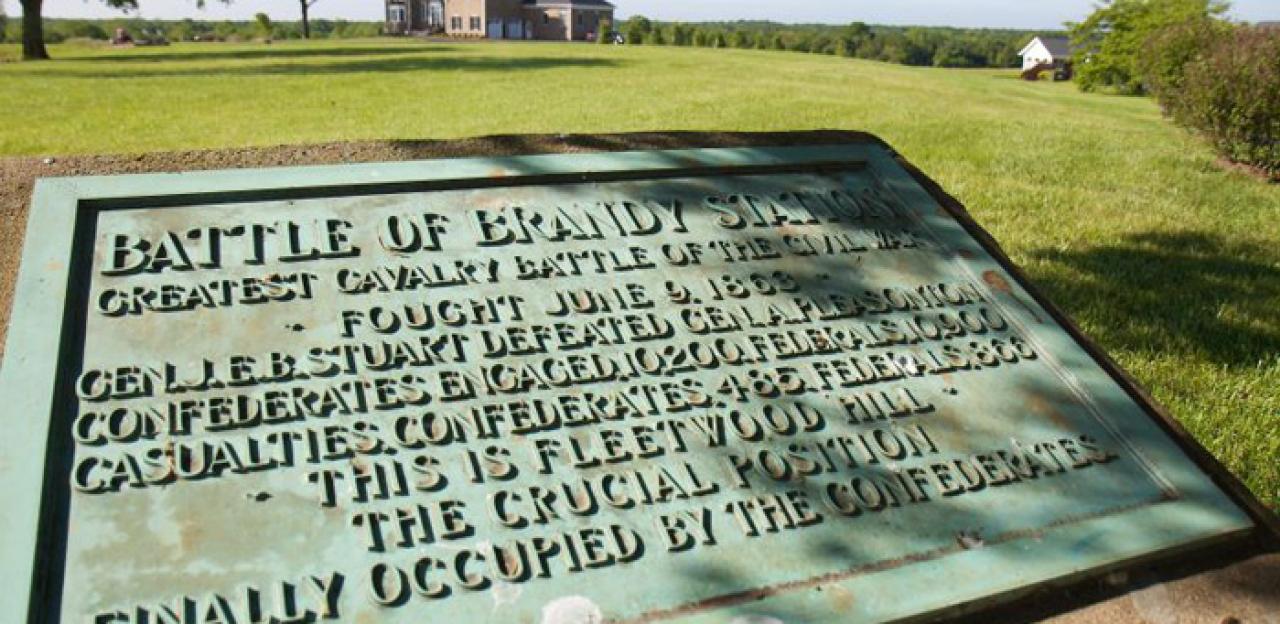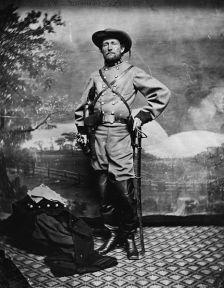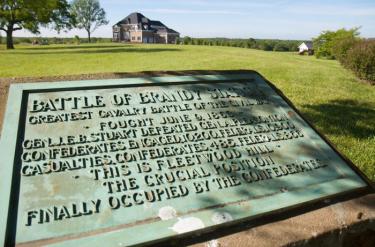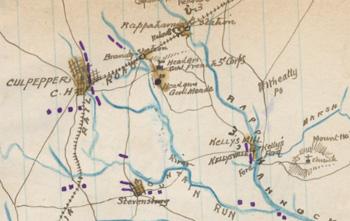Mosby Raids Culpeper

Clark "Bud" Hall
Brandy Station is most commonly known for the great cavalry battle that raged over it on June 9, 1863. But this Culpeper County landmark was significant to both armies throughout the war. In this article historian Bud Hall discusses just such an action involving the "Gray Ghost," John Singleton Mosby.
Some men were born only to be great soldiers. And certainly if the Civil War never occurred, the names of Lee, Grant, Custer, Stuart, Longstreet and Stonewall would be mostly unknown today. But aside from these renowned West Point officers revealed to history via our fratricidal conflict, there emerged in 1861 a modest country lawyer absent military education who became one of the most famous soldiers in the annals of war. And although we think of "Mosby’s Confederacy" as comprising Loudoun and Fauquier Counties, it is a fact that John Singleton Mosby once led "Mosby's Rangers" in a nighttime attack atop the most famous military ridge in this country.

One cannot examine John Mosby’s career without first recognizing the martial genius of Gen. Jeb Stuart. There was no better judge of fighting talent than that retained by Lee’s cavalry commander, and Stuart spotted merit in precise intelligence reports amassed by a quiet, serious scout from Abingdon. About 5'7", and weighing 125 pounds, the wiry Mosby was easy to look past, but the intuitive Stuart saw steel behind his piercing eyes. One of Mosby's men wrote, "the secret of his power over his men...were his eyes...deep blue, luminous, piercing." Deadly, cold eyes: those of a killer.
Prompted by Stuart, John Mosby formed an independent command, mustered in as "Company A, 43rd Battalion, Virginia Partisan Rangers." (His only instructions: "Obey my orders. And fight!") In this creative tactical alignment, the bold Rangers operated behind enemy lines, with Mosby reporting directly to Stuart. Almost overnight, the Rangers became famed and feared for daring raids north and south of the Potomac, rendering the hapless Yankees "besides themselves with fury." Mosby soon devised a raid that brought his Rangers south of the Rappahannock.
On November 26, 1863, the Army of the Potomac departed Culpeper County to initiate the Mine Run Campaign. At the same time Yankee soldiers splashed across Jacob’s Ford, the Gray Ghost gathered 125 troopers in Rectortown. Unaware of their objective—the secretive Mosby never disclosed plans—Mosby’s Rangers proceeded to Coons' Mill on Muddy Run (near Don and Chris Stockton's home today). The opportunistic Mosby knew that as the Yankees vacated Culpeper, the remaining supply depot at Brandy Station offered a tempting target.

Mapmaker Robert Sneden and several clerks were left behind at Henry Miller's house on the south end of Fleetwood Hill. (Thomas Strode's Colonial home, "Fleetwood," once nobly stood near a recently appearing, massive mansion on the southern crest of the ridge.) Just beneath Fleetwood Hill, a large wagon train pulled in. About twilight, Private Sneden looked up the ridge and ominously observed a “line of horsemen...that did not look like our cavalry...reconnoitering our position.” He alerted his colleagues these riders were likely "Mosby's gang." Sneden’s mates, "laughed at my fears." A worried Private Sneden shivered against a "cold fog" gathering over Fleetwood Hill. He was soon fast asleep.
A "rough tap on the head with a pistol barrel" rudely awakened Private Sneden, and with pistol cocked, a Ranger informed Sneden that Mosby demanded his presence. Taken outside to Mosby—Sneden described the Partisan leader as "an undersized, thin visaged looking fellow"—Sneden was harshly questioned, but proved unhelpful. Thwarted by the brave Sneden, the Rebel commander nevertheless had a richer target in mind than rearguard clerks, to wit: the loaded wagons at Fleetwood’s base.

Pistols at their heads, Sneden and his comrades led Mosby down Fleetwood to the sleeping wagon camp. Mosby's men moved stealthily about the snoring teamsters, cutting mules loose from their tethers. Mosby then ordered his men to burn the wagons. And only when confronted with being burned alive did the teamsters finally awaken and realize their peril. But the tepid reaction by the aroused wagon guards was too little, too late.
Leaving forty burning wagons behind, Mosby's Rangers escaped toward Woodville with 23 prisoners, 112 mules and 7 horses. Mosby’s casualties: One Ranger shot in the thigh; Mosby's horse shot in the chest. As for Private Robert Sneden, Libby Prison awaited.
General Stuart glowingly applauded, "Mosby’s Culpeper Raid." And such compliments were certainly good enough for John Mosby, who wrote, "Praise from Stuart was all the reward I ever wanted."
This will be the only chance we will ever have to protect these 97 acres at Brandy Station, and the other 7 acres near Cedar Mountain, and we urgently...
Related Battles
866
433


